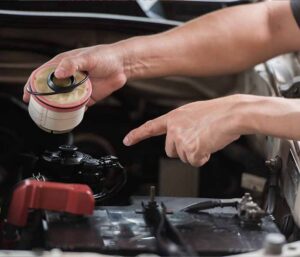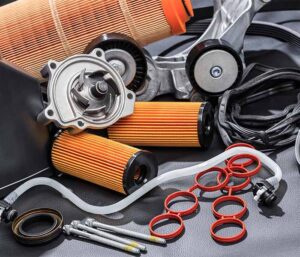Despite their small size, filters play a crucial role in modern automotive systems. A high-quality filter effectively removes impurities from air, fuel, and oil, protecting critical components like the engine and transmission, extending the vehicle’s lifespan, and improving overall performance. Faced with the dazzling array of filter products on the market, many consumers can’t help but ask, “How do I choose a truly high-quality automotive filter?” This article will provide a comprehensive and practical guide for car owners and buyers, covering filter types, quality standards, purchasing tips, and considerations.
I. Basic Types and Functions of Filters
Three main types of filters are used in automobiles:
- Air Filter
Located in the air intake system, it filters dust, particles, pollen, and other impurities from the air, ensuring clean air entering the engine. A high-quality air filter not only protects the engine but also improves fuel efficiency and reduces fuel consumption. - Oil Filter
It removes metal shavings, carbon dust, and other impurities from the engine lubricating oil, preventing these contaminants from circulating with the oil and damaging the engine. The oil filter’s filtration efficiency and structural design directly affect engine wear and service life. - Fuel Filter
Installed in the fuel line, it removes rust, impurities, and moisture from the fuel, protecting the injectors and engine system. An efficient fuel filter is particularly critical in areas with low fuel quality.
II. Key Indicators of High-Quality Filters
- Filtration Efficiency
Filtration efficiency is the primary criterion for evaluating filter quality. Generally speaking, high-quality filters should achieve a filtration accuracy of at least 99% and effectively block particles larger than 5 microns (especially oil and fuel filters). - Material Performance
High-quality filter paper or synthetic fibers offer enhanced filtration performance and durability. The supporting frame material should be pressure-resistant, corrosion-resistant, and high-temperature resistant. - Airflow Resistance/Pressure Loss
While filtration must be precise, it should not excessively affect air or oil flow. High-quality filters must maintain low resistance while ensuring filtration efficiency, maintaining normal flow rates. - Service Life
The filter media, sealing properties, and structural strength determine the replacement cycle. High-quality products have significantly longer replacement cycles than inferior filters and offer more stable performance.
III. How to Identify and Select High-Quality Filters?
- Choose a Well-Known Brand or Certified Supplier
Choosing reputable brands certified to ISO 9001 and TS16949 ensures quality control and reliable design. For example, Dunwei, MANN, BOSCH, and WIX are internationally recognized high-quality brands. - Check Product Specifications and Packaging
High-quality filter packaging should clearly indicate the model number, vehicle compatibility, and filtration efficiency. If these specifications are missing or the packaging is rough or has blurred printing, it may be a low-quality imitation. - Compare Materials and Construction
Observe whether the filter element density is uniform, the number of filter paper folds is sufficient, and the filter frame is sturdy. High-quality filter paper feels thick, has low resistance, and is resistant to deformation. - Pay Attention to Certifications and Test Reports
High-quality products often come with laboratory test reports, such as “99.97% filtration efficiency @ 5μm,” indicating that they have passed rigorous performance testing.
IV. Common Misconceptions and Purchasing Traps
- “The cheaper, the better”
Filters are consumable parts, and many car owners tend to choose cheaper alternatives, but often overlook their long-term costs. Low-quality filters have poor filtration performance, can easily cause engine wear, and ultimately increase repair costs. - “All filters are the same”
Even within the same filter model, materials and craftsmanship vary significantly between brands. Choosing products with quality system certification and a good user reputation is the wisest choice. - “Looking only at appearance, not performance”
Many counterfeit filters may appear to be genuine in appearance, but the filter media quality is far below standard. A comprehensive assessment must be made based on certification indicators and user reviews.




